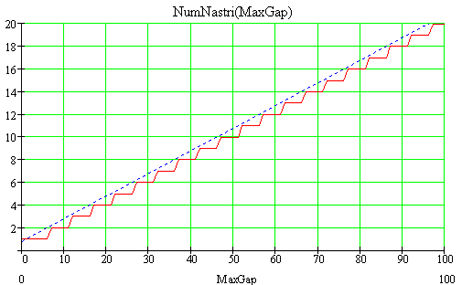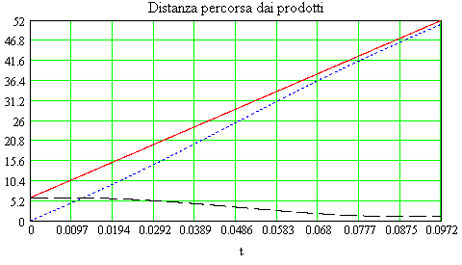
The alghoritm “FB_ComputeBeltsNumber” fixes the following problem (fig.1):
We suppose to have an infeed unit with a conveyor belt named "belt_1" where the products are coming randomly and the target is to compose these products in the last conveyor belt "belt_n" in a particular layout of ranking, i.e. ranks with a gap of DP mm between two products inside the rank and a gap of DR mm between the two ranks.
With the same values of correction (mm) and time (ms), if we replace the poly5 correction profile with a parabolic profile (linear in velocity) is true that we have a not continue acceleration (infinitive jerk) and a maximum velocity (MaxVel) greater of 5.5% but is also true that the maximum acceleration/deceleration MaxAccDec is lower of 40.6%, also every conveyor belt can do a correction greater and we need a less number of belts.

The question is: how many conveyor belt we need to do that ?
The input data are:
1- Distance between interference axis and pick-up axis (DInt)
2- Friction coefficient between product and belt (K)
3- Maximum gap on "belt_1" (Maxgap mm)
4- Production velocity (VelProd products/min)
5- Product lenght (LenProd mm)
6- Gap between two product inside the rank (DP mm)
For example with:
DInt=-45mm, K=0.3, MaxGap=30mm, VelProd=400 prodotti/min, LenProd=70mm, DP=1mm.
It means that the products are coming at a speed of 400 per minute with a maximum gap of 30mm and the target is to have on the last conveyor belt a gap of 1mm.
The alghoritm will correct for every conveyor belt Corr=5mm (with poly5 of correction profile).
The nominal speed of the first conveyor belt will be VelNom=473mm/s otherwise during the correction will get a maximum value of Vmax=569mm/s with a correction time of T=97ms equivalent of XScaling=233° (machine degree), the maximum acceleration/deceleration will be AccMax=0.298g (2.98m/s^2) also compatible with the friction coefficient of K=0.3.
The alghoritm will calculate N=6 conveyor belts.
Tip of the day:
The following graphic shows the "number of conveyor belts" depending of "MaxGap" (is a linear function)

The following graphic shows the positioning profile of the product "n" (red), the positioning profile of product "n+1" (dot blue), the gap profile between the two products (black).

The alghoritm "FB_ComputeBeltsNumber" is at disposal and written in:

